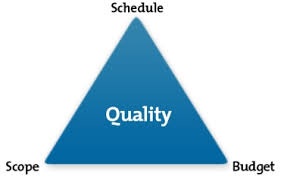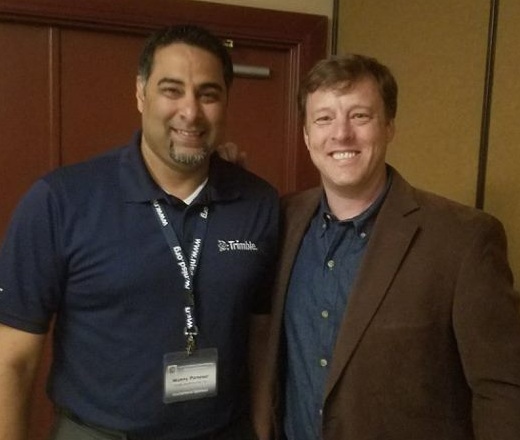NISD 2018: Three Themes to Spotlight
The NISD’s (National Institute of Steel Detailers) 50th Conference, held in Phoenix, Arizona May 4th and 5th provided a diverse set of speakers and topics, which did not disappoint the audience or me. Although this was my first NISD conference to attend, I came away with plenty of notes and ideas to share with my colleagues and you.
I could not possibly include all of my notes, ideas and thoughts in this post but I will include three spotlights of discussion that stood out. These were not intended themes but each speaker touched on these as did the discussions over breakfast, lunch and at breaks. The three themes I will spotlight include:
- Difficulties of Project Communication
- Love/Hate Relationship with Technology
- Challenges with Hiring
Difficulties of Project Communication
Spotlight number one is nothing new to the audience but I was surprised that after 12 years in the industry as a marketer, I’m still hearing this gap in the communication workflow from the practitioners. This started during the Welcome Cocktail hour and continued the next morning into breakfast, where one detailer said, “The A drawings and the S drawings in the bid don’t often lineup causing me to spend my time figuring things out.”
It was not just in the bid process. George Rolla, representing American Welding Society spent a good portion of his presentation “Welding Codes for Detailers” addressing the need to correct common errors. George said of learning to communicate with welders, “We know what he (the detailer) meant but it has to be there in case it goes to court. So an RFI needs to go out but that slows down the job. Inspector does not want to hold things up and turns a blind eye. But no! just do it right from the beginning.”
To continue on the drawing side of communication. One person said, “I’m not going to trust shop drawings until I inspect them first.” Dave Schulz of Schulz Iron Works and representing the Steel Erectors Association of America (SEAA) as the association’s new president, continued this theme in his presentation, “What detailers need to know about Steel Erection” said, “we love the models. When you (the detailers) give us (fabricators and erectors) the models we look at it.”
 Greg Brawley of PDC Asia Pacific, in his presentation, “A New Look at Old Issues” said, “We don’t have 100% of the information at the start of a project so the quality, according to the Triple Constraint Triangle, is off; so we’re doomed for poor quality.”
Greg Brawley of PDC Asia Pacific, in his presentation, “A New Look at Old Issues” said, “We don’t have 100% of the information at the start of a project so the quality, according to the Triple Constraint Triangle, is off; so we’re doomed for poor quality.”
Access to shared information, provides that flow of communication needed for project success. This information, such as connection design and configuration options, is generated in the cloud and becomes available for review (and sharing) faster than ever before because of technology
Love/Hate Relationship with Technology
I’m naturally drawn into these discussions because of my role in the industry. It’s also my general interest to understand the balance between the technology that binds us versus the technology that automates processes therefore reducing our time on tasks. Today it’s how to utilize technology to make the detailer’s life easier not more complicated.
The audience included a mix of those along the technology bell curve, from innovators to laggards. This mix was positive because so often I have found myself at conferences surrounded by like-minded and innovative individuals. With this audience, I heard the concern of losing much-needed intuition that comes from learning the basics first. I also came away realizing the misunderstanding of what 3D modeling can provide on a project – throughout the life of a project.
“I get 3D models and they’re useless. Why do I need to see so many columns; they are so tiny I can’t understand what’s going on?” This comment during breakfast and referenced a warehouse. Most of us have seen full-project models drawn to one sheet, which gives a great overview of the project but little useful detailing information. So if you’re only looking at the 3D model as a static, fancy drawing on the screen it will certainly appear to have little or no value; however, what was not understood was all the detail and information inside the model.
 In addition to these detailers, I talked with several detailers who have started to provide miscellaneous in addition to structural over the past few years. Schulz stated during his presentation, that in his experience, “it’s better to work with fewer people” and having miscellaneous and structural responsible for the detailing is a positive.
In addition to these detailers, I talked with several detailers who have started to provide miscellaneous in addition to structural over the past few years. Schulz stated during his presentation, that in his experience, “it’s better to work with fewer people” and having miscellaneous and structural responsible for the detailing is a positive.
Another attendee said, “The guy behind the computer screen forgets or does not know what this will be like for the guy in the field.” Combining the experience and the understanding of technology will also increase positive communication.
Challenges with Hiring
George Jones sang “who’s gonna fill these shoes?” and that song rang true to for me during NISD. OK, so The Possum did not expect talent to replace Merle, Hank or Willie but we do expect the Steel Detailer industry to replace themselves with others who are just as passionate and committed. These folks certainly are good people, good humor and have a real interest in keeping their profession growing. I dare say that doing that is almost a full-time second job. Several attendees were retired. Several brought along younger detailers. It’s going to take time, education and patience for those that have reached the top.
Charlie Carter, American Institute of Steel Construction (AISC) President was asked about acquiring young talent and how to groom a new hire as detailers. In addition to talking about the Education Foundation, he also said, “A lot of what we need can/should be done through schools. We can also do things at the college/university level.”
A very telling question was asked by Marianna Ludmer (also representing AWS): “How does one become a Detailer?” As a few people attempted to answer the question, my mind went to my daughter’s teacher recent email asking parents to come speak about their career. My career in this industry has been to help communicate the benefits of technology to detailers and others in the building and construction industry. After this question and the stumbles to answer it, I might just speak to her class and share my role in the exciting and rewarding steel industry and the different opportunities that are available.
Brawley asked, “Why are there not more young people in this business? It’s not sexy. It’s not like sitting on the couch designing software.” As a marketer, it’s how we present steel detailing. It is sexy. Really. It is designing. It is creating. It is contributing to great iconic projects and beautiful designs and the everyday infrastructure that moves us ahead one beam, one column, one connection at a time.
What can you do?
You’ve read this far. You must be interested. Share your thoughts. The more conversation we can have about these issues the quicker we’ll get to resolving them.
So until next year, during your busy day as a detailer and dealing with the continued challenges, consider what you can do to increase the needed project transparency, to embrace technology to help you reach your project and professional goals and to contribute to the next generation of detailers by sharing your profession with someone younger, much younger. Ask me what I’m doing to contribute. Ask me how Qnect contributes. I’m interested in having this conversation with you.
. . . . . . . . . .
Christian Erickson, Qnect’s Director of Global Marketing and Sales, attends conferences and events and shares his observations on industry trends in the Qnect news blog.
